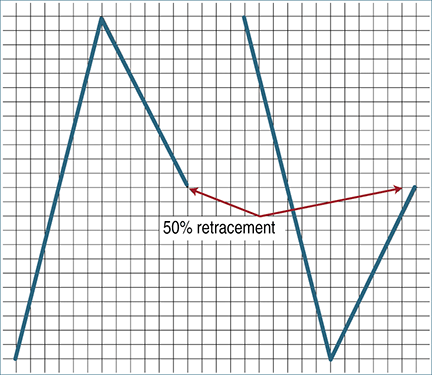TRADING TECHNIQUES
An Alternative To Elliott
Goodman Wave Theory
Logical and easy to apply, this wave theory can complement your own approach to technical trading.
Charles B. Goodman devised two trading theories, the Goodman wave (Gwt) and market environments (ME), and used them effectively in trading equities and commodity futures. I have further developed his work, codifying much of it. Even though I have written complex computer trading programs, Gwt and ME are still my “go-to” trading methods. I have used them successfully in equities as a registered investment advisor, in futures as a commodities trading advisor (Cta), and in forex as a private trader.
Here, I will discuss the three principles of the Gwt: propagation, intersection, and 3-C. These will also show how Goodman differs from other wave and swing theories. Finally, I provide a useful trade setup, the propagation trade setup (Pts), derived from Gwt principles.
The 50% retracement and measured move
The Goodman wave theory begins with the 50% return and measured move rules and constructs a complete trading approach from the ideal 1-2-3 wave.
The 50% rule, an old but very sound one, states that prices will find support or resistance at the 50% retracement of a price swing (Figure 1). The logic is easy enough to understand. At the 50% point all the buyers and sellers in the swing are basically even. Half of the buyers and half of the sellers have profits; half of the buyers and half of the sellers have losses. Goodman taught me the importance of being able to detect the underlying logic in any chart formation or indicator tool.

Figure 1: the 50% retracement. The Goodman wave theory begins with the 50% return and measured move rules. The 50% rule simply states prices will find support or resistance at the 50% retracement of a price swing.